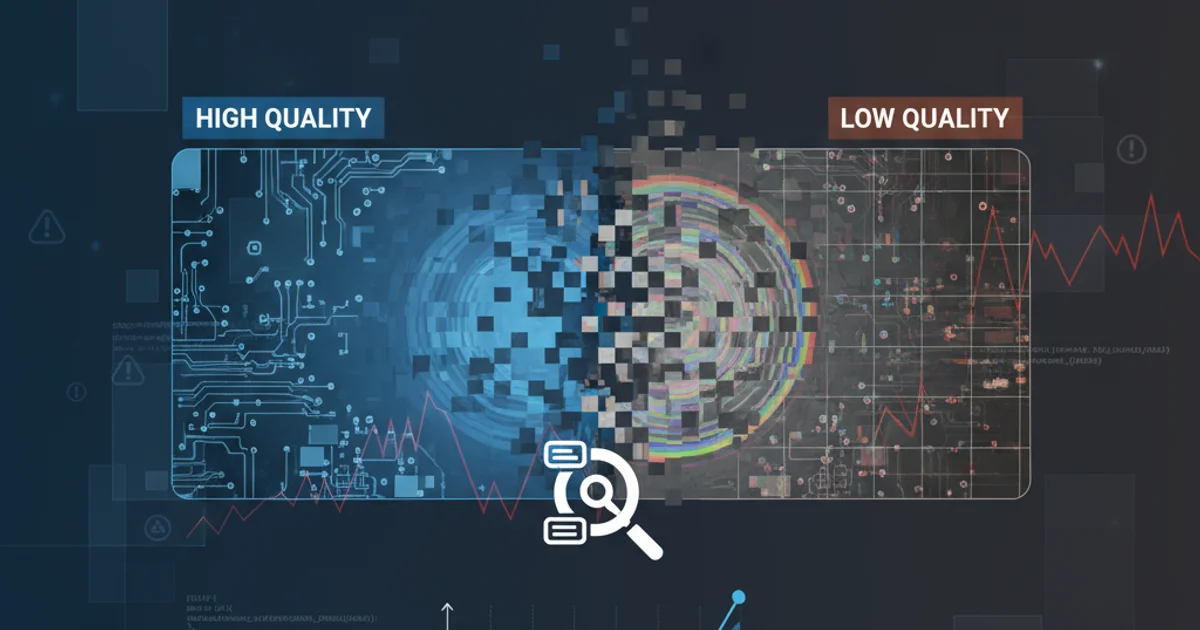Is it possible to tell the quality level of a JPEG?
Categories:
Unveiling JPEG Quality: Can We Quantify Compression Levels?

Explore the nuances of JPEG compression, how quality is defined, and methods to estimate or determine the quality level of an existing JPEG image.
JPEG (Joint Photographic Experts Group) is a widely used method of lossy compression for digital images. While it significantly reduces file sizes, it does so by discarding some image data, leading to a trade-off between file size and image quality. When working with JPEGs, a common question arises: can we determine the quality level at which an image was originally saved? This article delves into the technical aspects of JPEG compression and explores various approaches to assess or infer its quality.
Understanding JPEG Compression and Quality
JPEG compression works by transforming image data into frequency components, quantizing these components (reducing their precision), and then encoding them. The 'quality' setting, typically a number from 0 to 100 (or 1 to 100), directly influences the quantization step. A higher quality setting means less aggressive quantization, preserving more detail but resulting in a larger file size. Conversely, a lower quality setting quantizes more aggressively, leading to smaller files but more noticeable artifacts.
It's crucial to understand that JPEG quality is not an absolute, universally standardized metric across all software. While the underlying principles are the same, different encoders (e.g., Photoshop, GIMP, libjpeg) might implement the quality scale slightly differently, leading to variations in output even at the same nominal quality setting. Furthermore, re-saving a JPEG multiple times, even at a high quality, will progressively degrade the image due to repeated lossy compression.
flowchart TD
A["Original Image (RGB)"] --> B["Color Space Conversion (YCbCr)"]
B --> C["Chroma Subsampling (e.g., 4:2:0)"]
C --> D["Block Splitting (8x8 pixels)"]
D --> E["Discrete Cosine Transform (DCT)"]
E --> F["Quantization (Quality Factor Applied)"]
F --> G["Entropy Encoding (Huffman/Arithmetic)"]
G --> H["JPEG File (.jpg)"]
H --> I["Decoding Process (Reverse Steps)"]
I --> J["Reconstructed Image (Lossy)"]Simplified JPEG Compression Workflow
Methods to Estimate JPEG Quality
Directly reading the original quality setting from a JPEG file is generally not possible because the quality factor used during encoding is typically not stored in the file's metadata. Instead, the quantization tables, which are derived from the quality factor, are embedded. However, by analyzing these quantization tables or the image's visual characteristics, we can often estimate the quality level.
1. Analyzing Quantization Tables
Each JPEG file contains quantization tables used during its compression. These tables dictate how much information is discarded for each frequency component. By comparing these tables to standard quantization tables (e.g., those used by libjpeg at various quality settings), one can infer the approximate quality factor. Tools and libraries exist that can extract and analyze these tables.
2. Visual Inspection and Artifact Analysis
Lower quality JPEGs exhibit characteristic compression artifacts, such as:
- Blocking: Visible 8x8 pixel blocks, especially in areas of smooth color gradients.
- Mosquito Noise: Blurry or noisy halos around sharp edges.
- Color Banding: Discrete bands of color instead of smooth transitions.
- Loss of Detail: Fine textures and details appear smudged or absent.
While subjective, a trained eye can often distinguish between different quality levels. This method is less precise but can be useful for a quick assessment.
3. Using Image Processing Libraries
Several image processing libraries provide functions to analyze JPEG files and sometimes infer quality. These often work by examining the quantization tables or by applying algorithms that detect compression artifacts.
import jpeg_quality
# This is a conceptual example. Actual libraries might vary.
# 'jpeg_quality' is a hypothetical library for demonstration.
try:
quality = jpeg_quality.estimate_quality("path/to/your/image.jpg")
print(f"Estimated JPEG quality: {quality}")
except FileNotFoundError:
print("Error: Image file not found.")
except Exception as e:
print(f"An error occurred: {e}")
Conceptual Python code for estimating JPEG quality using a hypothetical library.
Limitations and Considerations
It's important to manage expectations regarding JPEG quality assessment:
- Estimation, Not Exact: Most methods provide an estimation rather than the exact quality factor used by the original encoder. This is because the quality scale isn't perfectly standardized, and different encoders might use slightly different quantization tables for the same nominal quality setting.
- Multiple Compressions: If an image has been compressed multiple times, especially with different quality settings or by different software, determining the original quality becomes significantly harder, if not impossible. The visible artifacts will be a cumulative result of all compression steps.
- Encoder Variations: As mentioned,
libjpeg, Photoshop, GIMP, and other tools might generate slightly different quantization tables for the same 'quality 80' setting. This makes direct comparison challenging. - No Universal Standard: There's no single, universally agreed-upon metric for 'JPEG quality' that transcends all encoders and scenarios. The quality factor is an input to the encoder, not an inherent property stored in a standardized way within the file for direct retrieval.